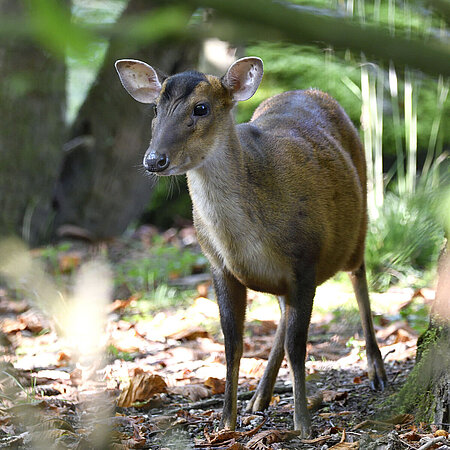Reeves' Muntjac
Muntiacus reevesi

- Family
- Deer (Cervidae)
- Weight
- 14 – 15 kg
- Habitat
- Subtropical rainforest
Path-finding skills
Reeves’ muntjacs are native to the dense undergrowth of the forests in south-east China. To navigate their way through the thick vegetation, they create paths, which they then learn by heart.

Hardly a picky eater
The Reeves’ muntjac is primarily herbivorous. Its main diet includes leaves, bark and bamboo. However, it is also partial to eggs, carrion and small animals.
Barking deer
Muntjac deer are also known as barking deer due to their alarm call that resembles the bark of a dog. They bark during mating, when provoked and to warn other animals of danger.
Muntjacs mark their territory with secretion from glands located just in front of each eye, which is spread on the grass and tree branches.
Distribution


Hellabrunn Zoo participates in the European Endangered Species Programmes